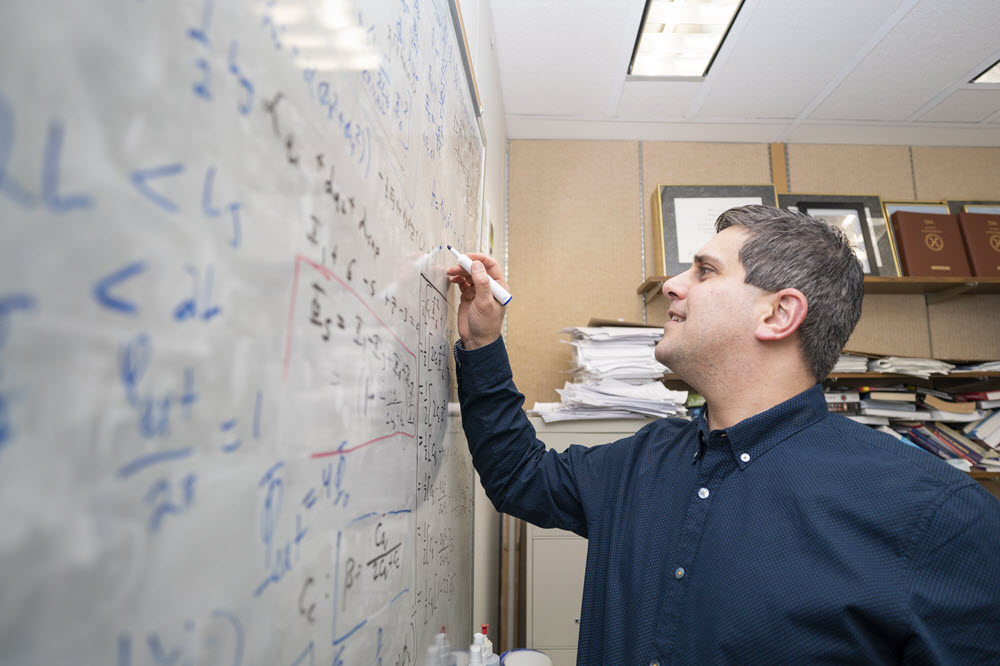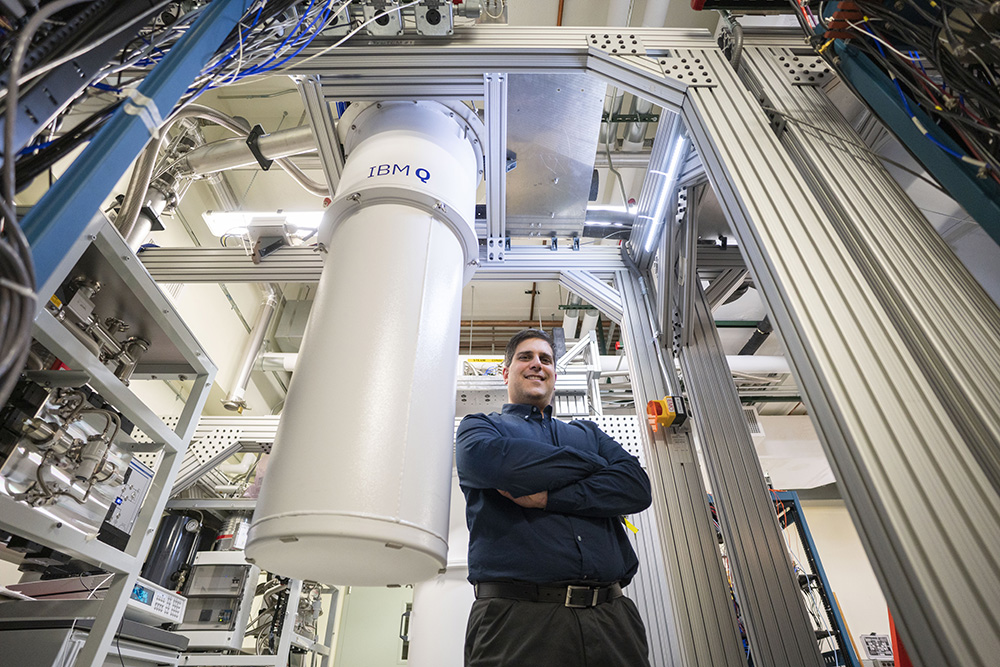Latest News
Baleegh Abdo: A Quest for Quantum Leaps in Computing
By Larry Greenemeier A common misconception about inventing is that it’s a trait a person is born with, like blue eyes. You either have the invention gene or you don’t. Not so, says IBM...
By Larry Greenemeier
A common misconception about inventing is that it’s a trait a person is born with, like blue eyes. You either have the invention gene or you don’t.
Not so, says IBM quantum computing researcher Baleegh Abdo. “Invention involves critical thinking and asking the right questions,’’ he says, “as well as the desire to solve problems and innovate—a set of skills that can be nurtured over time through hard work and persistence.”
Abdo would know. The 40-year-old researcher holds more than 60 patents related to quantum computing, most of them filed only in the past five years. That’s after a distinguished academic career that took him from Technion–Israel Institute of Technology to Yale University and then to IBM’s Thomas J. Watson Research Center in Yorktown Heights, N.Y.
Abdo grew up as part of the Palestinian minority in Haifa, Israel’s third-largest city and a major seaport. Since 1972, Haifa has also been home to the largest IBM Research lab outside of the U.S.
His family cherished education, prompting Abdo to spend much of his childhood studying hard. “The main event that shaped my personality was the death of my father, when I was about 8 years old,” Abdo recalls. “It gave me focus and purpose, and it taught me to see that life is short. So you have to try to accomplish the things that are important to you and, hopefully, leave a meaningful mark behind.”
The Exotic Allure of Entanglement
Abdo’s love of math and science—physics, in particular—led him to follow in older brother Hisham Abdo’s footsteps to enroll at Technion. There, the kid brother studied microelectronics, circuits and semiconductors as an undergraduate in the late 90s and early 2000s. Quantum computing was little more than theory when Abdo was studying at Technion. But he began to take an interest in research by physicist Yasunobu Nakamura in Japan and others who were experimenting with superconducting devices that exhibit quantum effects, such as having subatomic particles that exist in two places, or two states, at the same time.
 ROBERT JONES FOR IBMBaleegh Abdo, who holds more than 60 patents in quantum computing.
ROBERT JONES FOR IBMBaleegh Abdo, who holds more than 60 patents in quantum computing.
This “superposition” gives quantum bits, or qubits, the potential to process exponentially more information than the binary bits—0s and 1s—of classical computers. Qubits separated by distance are likewise able to share information and behave as one entity, through a phenomenon called “entanglement.”
Technion didn’t have a quantum computing curriculum at the time, so Abdo joined a group that worked on related technologies, including superconducting circuits and microwave circuits. That experience helped prepare him to join the department of applied physics at Yale University as a post-doctoral associate in the fall of 2009, after receiving his PhD in electrical engineering from Technion. Over the next few years, Abdo would work alongside some of the most prominent researchers in the burgeoning field of quantum computing, including Yale physicists Michel Devoret and Luigi Frunzio.
To Yorktown Heights, Via New Haven
Yale also introduced Abdo to a number of scientists who later became colleagues at IBM, including Jerry Chow, IBM Research’s Senior Manager of Quantum System Technology, and Jay Gambetta, an IBM Fellow and Quantum Computing Vice President. Abdo says IBM’s reputation as a world-class research institution and tech industry leader helped persuade him to join in 2013 as a solid-state physics researcher.
By 2015, Abdo had filed for his first IBM patent. Two years later the company recognized him as a Master Inventor, a distinction for employees who have learned how to successfully file for patents, mentored others in the process and helped grow the company’s patent portfolio.
All of Abdo’s patents—including the 17 he was awarded in 2019—fall into one of four categories: devices and techniques for better measuring quantum states; architectures for scaling superconducting quantum processors; new qubit designs and quantum gates; or technology for quantum communication and remote entanglement of qubits located in separate dilution refrigerators. The refrigerators keep temperatures around the processors at slightly above absolute zero in order to keep qubit particles in superposition for as long as possible (typically, small fractions of a second).
For a patent application to be successful, it must convey a well-formulated idea, device or method that solves a problem in a way that’s novel, unobvious and useful, Abdo says. “It’s a creative mental activity of contrasting new ideas, devices and applications,” he adds. “Your building blocks are not physical, but rather mental images and ideas that you utilize to create something new.”
Collaboration as a Force Multiplier
Most of Abdo’s patents list him as the sole inventor, but he is quick to collaborate when he has an idea but lacks the knowledge to fully develop it. Often, such collaboration is the result of discussions with colleagues concerning a particular problem or issue that needs to be solved.
 ROBERT JONES FOR IBM
ROBERT JONES FOR IBM
A few years ago, for example, Abdo worked with IBM researchers Jared Hertzberg and Easwar Magesan as well as Gambetta on an idea related to a particular type of qubit called the transmon.
High-coherence transmons usually have fixed frequencies that cannot be precisely fabricated. For two transmons to become entangled, their frequencies must be similar but not the same. Otherwise, they run the risk of “colliding,” which means their close frequencies prevent the gate from working properly.
The resulting patent, entitled “Weakly tunable qubit based on two coupled disparate transmons,” seeks to avoid quantum computing inefficiencies created by colliding qubits.
Abdo initially brought an idea for changing qubit frequencies to Hertzberg, who was investigating qubit collisions. “He helped me further develop my initial idea, which we then took to Jay Gambetta, who pointed out a circuit weakness in our idea and proposed a change to the circuit to make it less sensitive to charge noise that causes qubits to lose their quantum state,” Abdo says. “Easwar Magesan then modeled our proposal theoretically, showing the idea was indeed feasible and would work as expected.”
The researchers presented some of the theoretical and experimental work behind the patent last March at the American Physical Society meeting, receiving positive feedback.
Mentors Matter
The process behind that particular patent application is also a good example of how experienced IBM innovators often mentor their colleagues. In addition to Chow and Gambetta, Abdo cites Mark Ritter’s guidance as instrumental to his success. Ritter, the chairman of IBM Research’s Physical Sciences Council, was one of Abdo’s managers when he joined IBM Research and taught Abdo the ins and outs of the patent application process.
“Whenever there’s a question of collaborating with other groups in academia, I turn to Mark, Jay or Jerry for advice,” he says, adding, “A good mentor is also someone who gives you the independence to pursue your own ideas and interests.”
As Abdo works to develop scalable new architectures for ever-larger quantum processors—those with hundreds, even thousands, of qubits—he finds inspiration in IBM’s position at the forefront of quantum computing research and technology.
“I look forward to a transformation in quantum computers that makes them commonplace,” says Abdo, who lives with his wife, Jamie, and two children in Fishkill, N.Y., where he likes to spend his time outside of the lab enjoying the outdoors with his family. “It’s the kind of disruptive tech that doesn’t happen often, and I hope to leave my meaningful mark on quantum computing.”